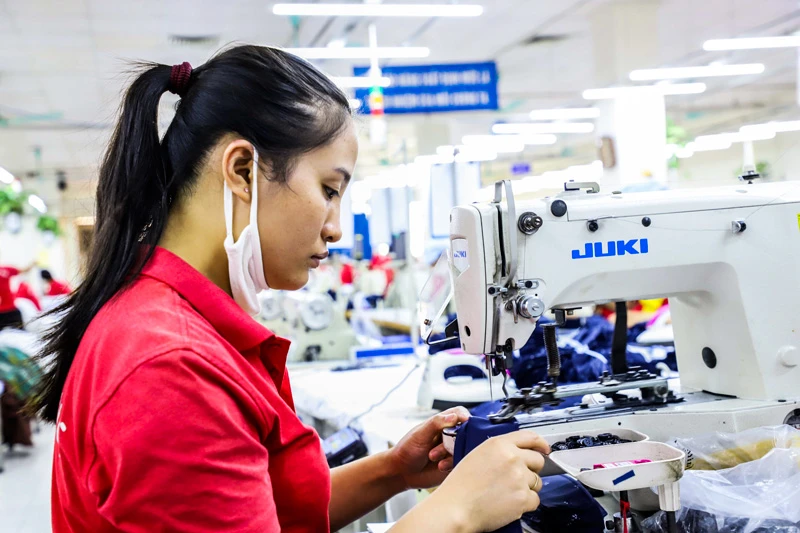
This is being considered the largest Free Trade Agreement (FTA) ever to be signed in the world with a scale of nearly USD 27,000 bn which amounts to 30% of total global GDP with 2.2 billion people. Vietnam is set to benefit a lot from this FTA, although many experts are of the opinion that RCEP benefits have been overhyped.
Race for markets
Mr. Pham Xuan Hong, Chairman of the Ho Chi Minh City Textile and Embroidery Association, believes that RCEP will provide a good opportunity for businesses to introduce their products in the Japanese market, which is one of the three largest textile and garment importers of Vietnam.
Up until now, Vietnam has signed three bilateral and multilateral FTAs with Japan, including ASEAN-Japan (AJCEP), Vietnam-Japan (VJEPA), and CPTPP, but has yet to take advantage of the opportunity to push export of textiles and garments to this market due to failure to meet the requirements of rules of origin, and hence are not entitled to tariff preference. RCEP can attract more foreign enterprises, especially Chinese enterprises, to invest in raw materials and accessories, an important factor in meeting the rules of origin for other FTAs that Vietnam has signed.
In another perspective, the opportunity is not necessarily for Vietnamese enterprises. According to an analysis, in the group of textile and garment export enterprises, leather and footwear include foreign-invested enterprises, mostly from Taiwan and China. FDI enterprises with Chinese origin may take advantage of this opportunity to direct competition with Vietnamese enterprises for the Vietnamese market, while Vietnam can boost exports to Japan and other countries in the RCEP, such as China as well. It is forecast that Vietnamese and Chinese textiles and garments will be in a race to enter the Japanese market.
Although the utilization rate of FTAs by Vietnamese enterprises is still quite low, on an average only about 30%, some benefits may be visible under RCEP. Similar to textiles and garments, agricultural products are also set to benefit when RCEP takes effect. Mr. Dang Phuc Nguyen, General Secretary of the Vietnam Fruit and Vegetable Association, said that under RCEP the possibility is that the export turnover of vegetables and fruits to China will increase rapidly, with China being the largest import market of vegetables and fruits for Vietnam.
Mr. Dang Phuc Nguyen also feels that we can boost exports to markets such as Japan and South Korea, though in the race to boost exports, Vietnamese fruit will have to compete with similar quality being sent by Thailand, Malaysia, and the Philippines. In order to win this race, two factors that need to be ensured are that of price and quality, which requires Vietnam to strive to conquer these fastidious markets.
One of the reasons RCEP is being considered a "super FTA" is because it covers a consumer market of 2.2 billion people. However, the countries under RCEP are mostly manufacturing countries, and not high consumer countries, so the purchase power is really not that strong.
Several risk factors
Under RCEP, the first possible risk could be that more goods from other countries will flow into Vietnam. Currently, China, South Korea, are partners of Vietnam with a large trade deficit. According to Minister Tran Tuan Anh, RCEP is basically an agreement connecting ASEAN commitments with five partners in one agreement. Therefore, it does not create a commitment to open markets or new competitive pressure, but only aims to create favorable conditions for businesses. So we are not too concerned about the possibility of increasing trade deficit, and Vietnamese enterprises, mainly SMEs, will have many opportunities to join the new supply chain created by RCEP.
Mr. Pham Viet Anh, an enterprise growth consultant, shared his perspective when he said that the downside of FTAs in the long run is the risk of bankruptcy of a weak domestic manufacturing industry. Thus, if we think positively, FTAs create strong pressure to push domestic enterprises to innovate in order to survive. Mr. Viet Anh admitted that in order to determine the benefits of the agreement, it is necessary to have enough information to thoroughly consider the direction of short-term and long-term benefits, and the many objectives of all sectors, before making any comments. In short, the obvious benefits are just theoretical and need to be seen in practical terms in the future.




















